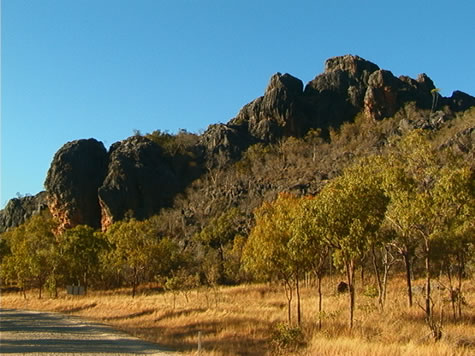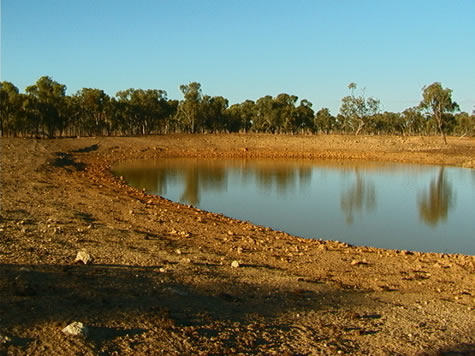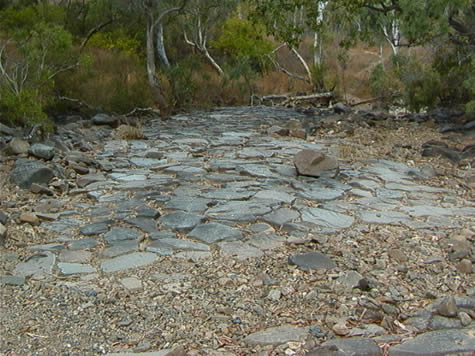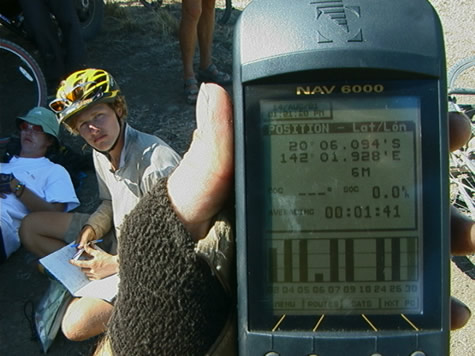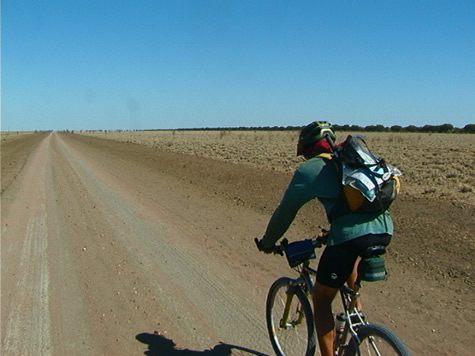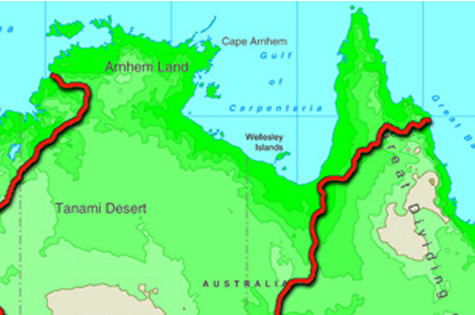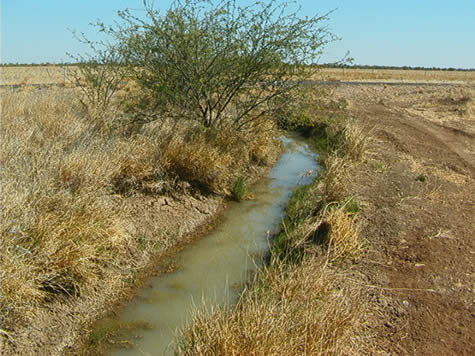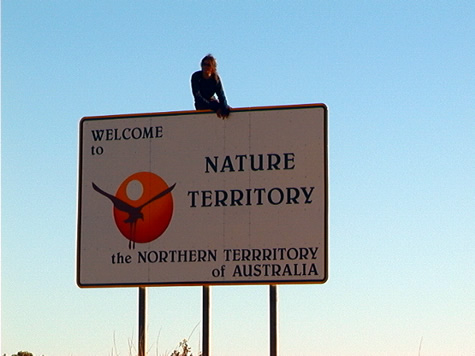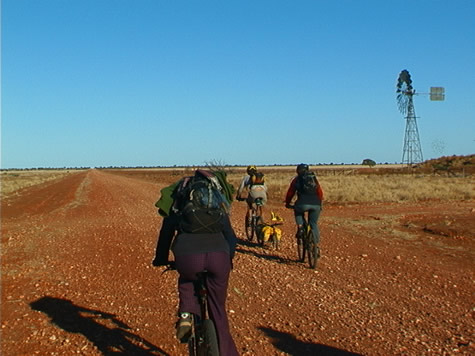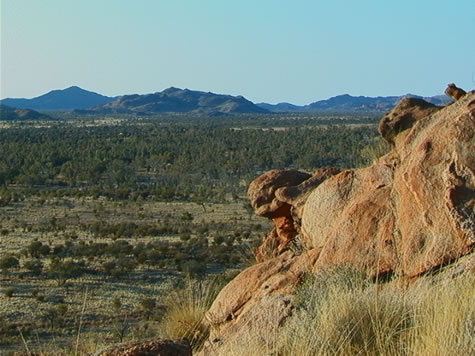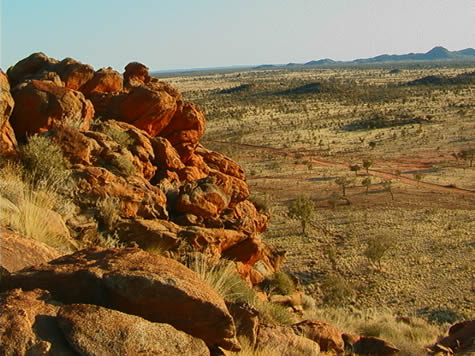Damper and Topography
Part of the reason why damper was such an ideal food to live off on the
goldfields was partly because of the geography of the region. The early
diggers had to carry enough food for 6-months into the Palmer River.
And
because the area was so remote, it made sense to carry food that was
cheap, lightweight (for its nutritional value) and easy to cook.
The Palmer River region is in the Great Dividing Range of mountains
that
stretch north/south from the tip of Queensland thousands of miles all
the way down to bottom of Victoria. The mountains are formed by the
convergence of two tectonic plates called the Tasman Fold Belt and the
Australian Craton - that are pushing up the earth's surface to produce
mountains.
The early diggers would have had to pass over the Great Dividing Range
from Cooktown to reach the Palmer River. Without a road the trip would
have been extremely hazardous. Apart from the severe relief, they would
have also had to deal with loose rock and shale that characterize the
region. One bad foothold could mean serious injury.
Being the watershed for rainfall draining both to the Pacific Ocean (to
the east) and the Gulf of Carpentaria (to the North), the Great
Dividing
Range is home to many rivers. During the wet season, the level of these
rivers would rise considerably, making crossing them too dangerous. So
the early diggers would also have had to contend with the problem of
returning to Cooktown before wet season set in.
Question: can you think of any mountains or rivers where you live than
influence people's lives? How are their lives affected? Are they
positive or negative influences?
Jason
